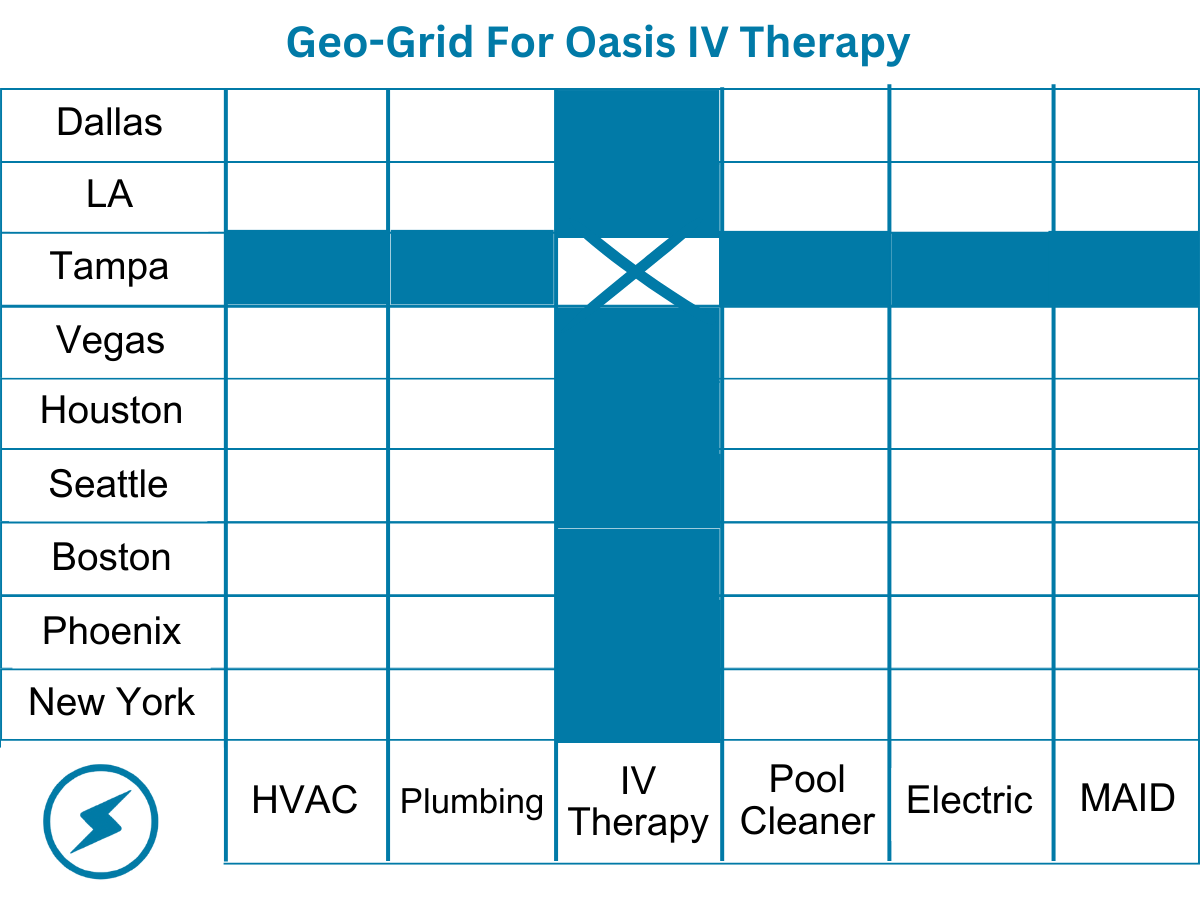
There is a lot of perceived mystery and magic surrounding SEO.
So many people pay a lot of money to someone to “do their SEO,” which is just a lot of nonsense. As a former search engine engineer, I can talk about “doing SEO” as well as anyone — but I sat down with Mike Jensen, the Director of Marketing at Boostability, to talk about what’s really happening behind the scenes.
First, I’ll cover the basics of SEO, which might seem a bit boring to some.
But stick with me, because I’m about to reveal a strategy that will change the way you think about SEO. It’s completely legitimate and incredibly powerful — it’s called the “geo-category grid.” I’ve shared this with some of the top SEO experts I’ve known for years, and they all agree: this approach works.
The Evolution of SEO: From Links to EEAT
Google has always aimed to approximate what a human would expect to see if they searched for something like “truck accident lawyer Kentucky.” But how does Google determine who should rank for that? They need a voting system, and 20 years ago, that system was based on websites linking to each other. Every link was a vote in a popularity contest. The more votes you got, the higher you ranked.
SEO people started gaming this by creating tons of garbage pages that linked to each other to boost a particular page’s rank. As a programmer, I could generate a thousand websites, each with a thousand pages, and have them all vote for the page I wanted to rank by saying things like “Darryl Isaacs is the best Kentucky truck accident lawyer.”
Yahoo and Google used to crawl the web and count these votes, placing the website with the most links at the top. But as spammers started flooding the internet with these fake links, search engines had to become more sophisticated.
They introduced a system called PageRank, where links from high-authority sites like government or media pages carried more weight. For example, a link from The New York Times was worth much more than a link from a random blog.
Search engines also started to look at other factors, like how fast links appeared (link velocity) and whether the linking sites were trustworthy. If too many links appeared all at once, or came from suspicious sources, it raised a red flag.
Then Vs. Now
The entire system now revolves around the quality of links, not just the quantity.
If irrelevant sites link to your page, like a blog about palm trees linking to a personal injury lawyer, it looks suspicious. Google’s algorithm works like a lie detector, examining various factors to determine if the links are legitimate.
For instance, I searched for a house in Nashville, and the top result was Zillow, followed by other real estate sites. One site ranks on every address inside Nashville because they’ve scraped all the addresses and posted them on their website.
This site likely makes millions of dollars by ranking for these terms, and it’s all thanks to powerful links. They’ve got links from high-authority sites like NHL.com, where their real estate agent is a sponsor. This sponsorship link from a major site like NHL.com is the reason they rank so well, even though it might not seem directly related to real estate.
The point is that Google values high-quality, relevant links.
The Geo-Grid: An Effective SEO Strategy
The connection between a hockey team and a real estate agent in the same city is enough to establish relevancy for Google’s algorithm.
Similarly, if you run a blog about traumatic brain injury, you’ll link to relevant experts and research. It doesn’t matter where the experts are located; what matters is that the content is relevant to your topic.
This is how the top SEO professionals think. They focus on getting links that are either geographically or topically relevant. For example, if you’re a car accident lawyer in Louisville, you’ll want links related to either Louisville or car accidents. This forms the basis of the geo category grid strategy.
We happen to control many high-authority websites and run groups with local businesses, so we can use these links to help each other. It’s a legitimate strategy, and it’s not spammy.
We want to show that we actually do the thing we say we do in the city we say we do it.
Google is a lie detector test that assumes you’re guilty unless you have actual proven experience doing HVAC in Las Vegas, Nevada, for example.
While ChatGPT is great at tuning content, it’s even better at assessing whether your content meets this simple standard of actually doing the thing you say you do in the city you say you do it.
The geo-grid is how you powerfully and legitimately do this.

What Is a Geo-Grid?
It is about leveraging company connections across different verticals and geographic areas around the country. This strategy is designed for local service businesses and serves as an example of an “SEO strategy” that actually works.
Your business vertical could be anything from plumbing, real estate, lawn care, to a barbecue restaurant — any service business at all. In the Yellow Pages, these are traditionally referred to as “headings.”
For instance, you’d look up a mechanic, veterinarian, or similar service under these headings.
In addition to verticals, there are also various regions or cities to consider. In marketing, these are known as DMAs, or Direct Marketing Areas. There are approximately 300 DMAs across the United States. For example:
- Los Angeles may cover areas like Orange County, Hollywood, Beverly Hills, Santa Monica, and Manhattan Beach.
- Salt Lake City could include regions like Daybreak, Lehi, Orem, and Provo, along with surrounding areas.
This segmentation applies to other major areas as well, such as Phoenix, Chicago, and New York, which has its own unique geo-structure. These geographical divisions help define how marketing efforts are segmented and targeted effectively.
I’m not going to draw out 300 rows or list 300 different categories here, but you can see that any local business falls into one of these intersections.
Let’s choose one type of business — say, a plumber. Now, pick a city, like Chicago. So, we have a plumber in Chicago, right here in our example.

A plumber in Chicago can strengthen their SEO by building relationships and co-creating content with other businesses in the city (on the x-axis) while also networking with plumbers in other “DMAs” (Direct Marketing Areas). This dual strategy enhances both local relevance and industry-specific authority, which are essential for successful SEO.
Google uses a framework called E-E-A-T to evaluate content. This stands for Experience, Expertise, Authority, Trust. They added “Experience” recently, in an effort to counter the rise of AI-generated content, which often lacks authenticity.
For instance, some sites flood the internet with AI-generated pages on topics like “50 Ways to Unclog Your Toilet” or “Best Plumber in Richardson.” These pages target numerous locations, including places like Chicago and Oakbrook, Illinois, but fail to demonstrate any real connection or activity in those areas.
If you’re a plumber in Chicago, you’re positioned to prove to Google that you are the go-to expert when someone in the city or nearby suburbs needs plumbing services.
To do that, you have to establish credibility — demonstrating Expertise, Authority, and Trust as a plumber specifically in Chicago. But how do we establish relevance? This brings us to link-building, which ties into relationships, SEO, and more.
Building Credibility in Chicago
To establish your authority as a plumber in Chicago, focus on creating genuine connections and showcasing your activity in the community. For example:
- Attend industry events, like a plumbing conference in Denver, to exchange ideas with other plumbers. Sharing insights on trends, tools, and personal experiences, like how you got into plumbing, strengthens your industry authority.
- Highlight your company’s local activity. If your plumbing company has a $3 million annual revenue and a fleet of 10 vans, share stories about your team’s work in notable Chicago locations like Miracle Mile or Navy Pier. Celebrate milestones, like an employee’s eight years of service, to humanize your brand.
- Incorporate cultural references to connect with your community. For example, post a picture of your team enjoying deep-dish pizza or mention popular Chicago landmarks, such as the bubble gum wall or the Ferris wheel at Navy Pier. Your plumbers might also have connections with local real estate agents, barbecue joints, or other businesses in Chicago. These elements reinforce your local presence.
Why Random Link-Building Fails
Some businesses attempt to boost their SEO by purchasing backlinks from platforms like Fiverr or Upwork, offering services like “100 DR60+ links for $5.” However, this approach can harm your credibility.
Why? Because of E-E-A-T. When an SEO “expert” buys random links on your behalf, and those links are coming from unrelated websites, like a backpack factory in Pakistan linking to your Chicago plumbing company, Google sees this and questions why a factory in Pakistan would be linking to a plumber in Chicago. It doesn’t make sense, and it actually weakens your online credibility.
Google evaluates the relevance of links based on their source. For example:
- A link from a Chicago-based lawn care business could support your local SEO.
- A link from another plumber in Los Angeles could establish your industry authority.
Focusing on Relevance
To succeed in SEO, you need to focus on either geographic relevance (your location) or vertical relevance (your industry). For a Chicago plumber, this means:
- Collaborating with local businesses to highlight your activity in the city.
- Networking with other plumbers to share expertise and build connections across different regions.
By following these steps, you’ll demonstrate to Google that you are an active, credible professional in your field and your community.
So, if you’re an interior designer, roofer, or whatever — do you know others in your field? Can you meet them and interview them for a minute or two?
When you share real conversations about your industry, Google sees that as expertise. Only someone active in the field can share that kind of knowledge.
Now, if you hire a random “certified content expert” on Fiverr, how likely is it that they would be able to write an article that passes muster with someone else who’s a plumber?
For instance, a plumber writing about water heaters — how to tell if they need replacement or comparing different heater types — will demonstrate a depth of knowledge that only someone in the field can provide.
If that plumber meets another plumber at a conference, say in Denver, and gets a link from their site in Los Angeles or New York, which is already ranking well for plumbing terms, that link becomes highly relevant and credible.
Now, consider a Chicago deep-dish pizza place. It has nothing to do with plumbing, but it’s a Chicago business. Google recognizes it as part of Chicago through reviews, Google Maps, and GMB listings. If you check in there, interview the founder, or write a post about your favorite pizza on the South Side, it reinforces your connection to Chicago.
So, you need relevance — either to your work or your city. How do you do SEO and build links the right way? Sure, AI can create content, but that’s not what builds credibility. The right approach is forming real, meaningful connections.
And this is not about a link exchange, which is where SEO critics might say, “Oh, Dennis is advocating a link exchange or a PBN.” No, that’s not what I’m saying.
I’m saying that if you have a seed of something legitimate — like a one-minute interview — it can go a long way. It could be a quick cell phone video, noisy, with no fancy microphones. What matters is that you’re establishing what’s called the Knowledge Graph — proving that something actually occurred.
For example, if I search for the term “running” in my photos, here’s what comes up:
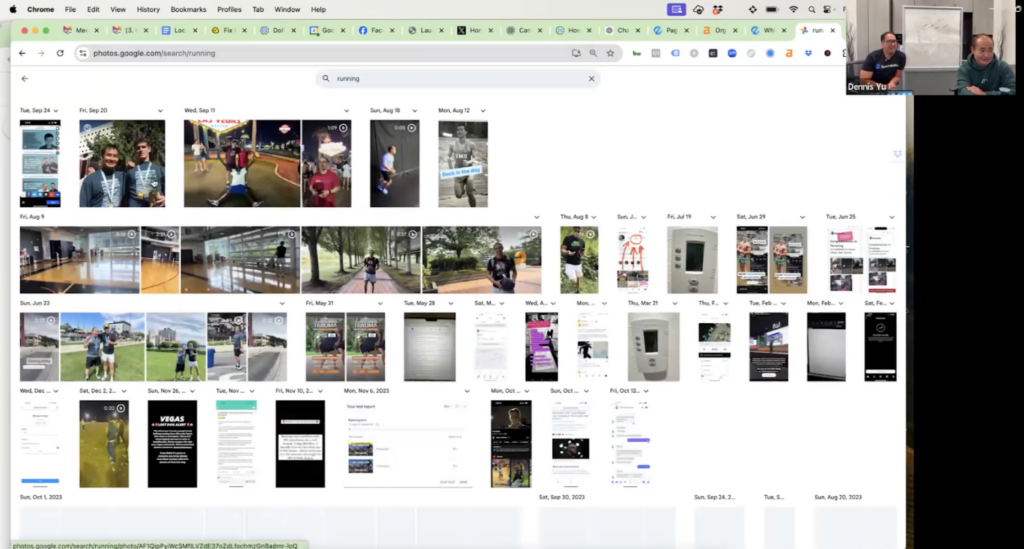
As you can see, I ran the Portland Marathon in Portland. I also visited Nike’s headquarters with a friend where we did some running, and I ran the Aspen Marathon too.
These ingredients establish clear proof that I was involved in these activities with these people. Think of Google as a judge. I’m proving to Judge Google that I do the thing that I say I do in the city that I do it in. That’s how I define local SEO: Do you have proof that you do what you say, where you say you do it?
So if you’re a plumber and know other plumbers or other local businesses, just capturing those moments with them on your phone — even if it’s just photos — can help you establish your Knowledge Graph as well. Because these real experiences or photos are the raw ingredients you need, that someone like Boostability or a virtual assistant can process to legitimately build your reputation in the community and do SEO.
We like to tell local businesses, especially service businesses selling higher-ticket items involving a license, like repair services, that you’re in charge of the strategy, you’re in charge of the relationships, you’re in charge of taking care of the customers – getting the ingredients by doing good work which generates positive signals, leading to good reviews.
But if you have the right ingredients – then a company like Boostability or your current digital agency can work with those ingredients.
You can’t just pay someone $2,000 a month, write them a check, and expect everything to work. It doesn’t work like that. You need to provide the ingredients.
If you’re working with a company claiming to do SEO and you don’t give them ingredients or there isn’t a proper intake process, it won’t be effective.
A proper intake process is essential, like what Boostability offers.
Then you have to wonder what you’re getting. If they don’t have ingredients, what can they possibly cook?
If you have bad reviews, no SEO company will legitimately be able to fix that.
Let me show you something.
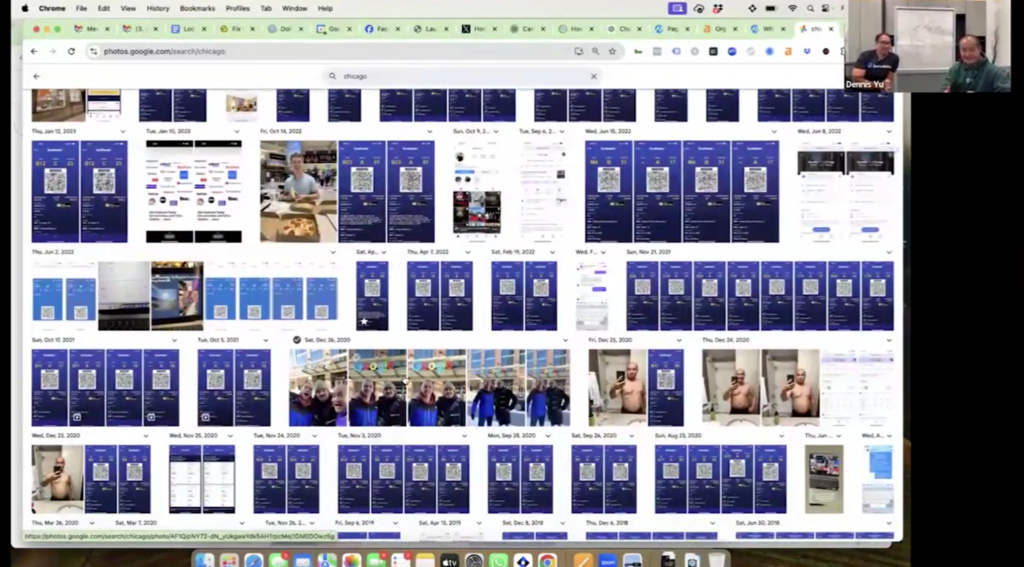
Look at all these boarding passes. Do you see how many there are?
Clearly, if I took this and made an article titled “Here’s What You Need to Know About Flying Southwest Through Chicago,” which is one of their hubs, would that be considered authoritative by Google? Yes. But I could also use AI to write an article like “How the Pros Navigate Midway Airport with Southwest Airlines,” and it would generate something for me, right? It would list tips like arriving early, using the club, or finding the best restaurants.
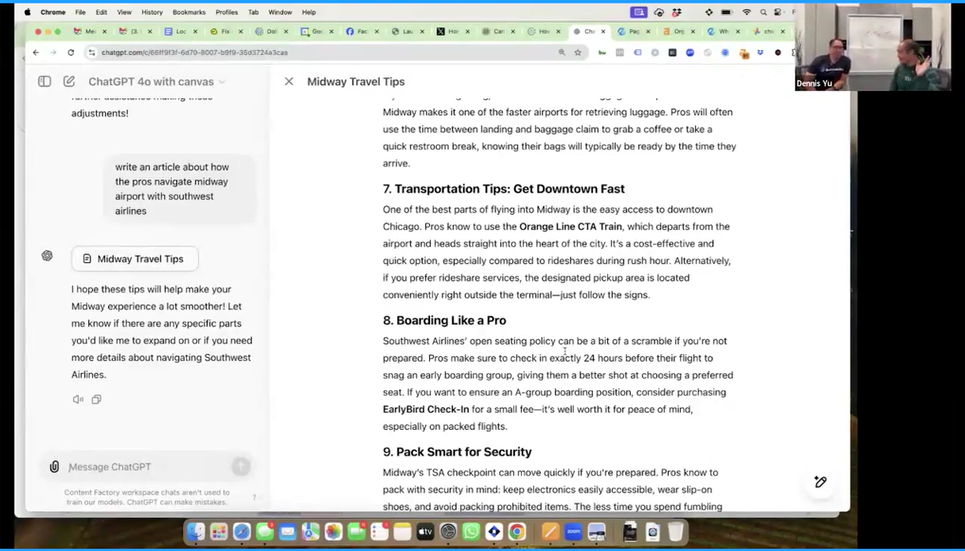
The Problem with Synthetic Content
Here’s the thing: all the restaurants are owned by one concessionaire, so it doesn’t really matter where you go—they’re all the same. It’s like Disneyland. You think you have choices, but they own everything. Anyway, I could write an article listing these 10 tips. For example, I get perks because of my status: free bags, flight changes, and so on.
Now, the AI might produce a decent article with pretty good tips. It could even mention things like flying into Midway for international travel, connecting to O’Hare, and catching a direct flight to Stockholm. It’s capable of writing all that. But does it have any E-E-A-T? Does it have real evidence that I’ve been to Chicago, that I know anything about Chicago, or that I’m credible? No, it doesn’t. There’s zero E-E-A-T.
This is what’s called synthetic content. It’s just generating something out of thin air without any real substance. I could take that content, turn it into a blog post, and use tools like Link Whisper and Rank Math to interlink it across my sites. But without real ingredients or evidence, it’s still just synthetic content — lacking any genuine authority or trustworthiness.
Google’s Crackdown on AI-Generated Content
And now I’m going to rank for “best travel agent in Chicago” or whatever it is. You know what? That strategy worked for the last 20 years — until last March.
That’s when Google’s Helpful Content Update 1 and Helpful Content Update 2 came out, and they caused all the rats to flee. Millions of sites have been hammered, and I don’t know a single one that’s had a reinclusion request accepted. Google’s been that harsh in cracking down on AI-generated content.
Creating Relevant and Real Content
I’m not trying to scare people — these are just the facts.
So, let’s say I’m a plumber in Chicago. I could talk about my favorite airports in Chicago, when I use O’Hare versus Midway, and sprinkle in some relevant points.
For example, here I am at Google’s sales headquarters in Chicago:

Facebook also built a huge sales office in Chicago.
You can see me here at Facebook in Chicago with some clients. This woman, for example, manages agency relationships for the top 20 advertisers on Facebook among agencies:

You can see we’ve clearly been here. We even wrote on the wall in Chicago, and you can see exactly where it happened.
The Importance of Metadata and Real Signals
Some people argue that metadata — like who’s in the image, where it was taken, and other details — doesn’t count or affect SEO.
Google might claim things like, “We don’t use Chrome click data” or “We don’t use browser data,” or even “We don’t use data from your Google Analytics to influence Google Ads.”
But remember that DOJ lawsuit, where Apple and Google had a dispute and Google had to reveal how their algorithm works?
And in the last few months, there was that massive data leak, which showed that Google does actually use a lot of this data.
Sure, some people will argue otherwise, pointing to Google’s public statements. But the reality is, they do use the data.
Real Local SEO Signals in Action
So, when it comes to a real plumber in Chicago, they have these actual signals. If we look up “plumber Chicago,” we see a local service ad. Then there’s a regular ad, followed by the Google My Business (GMB) 3-pack search results.
And then there’s “Mike’s Plumbing Chicago.”
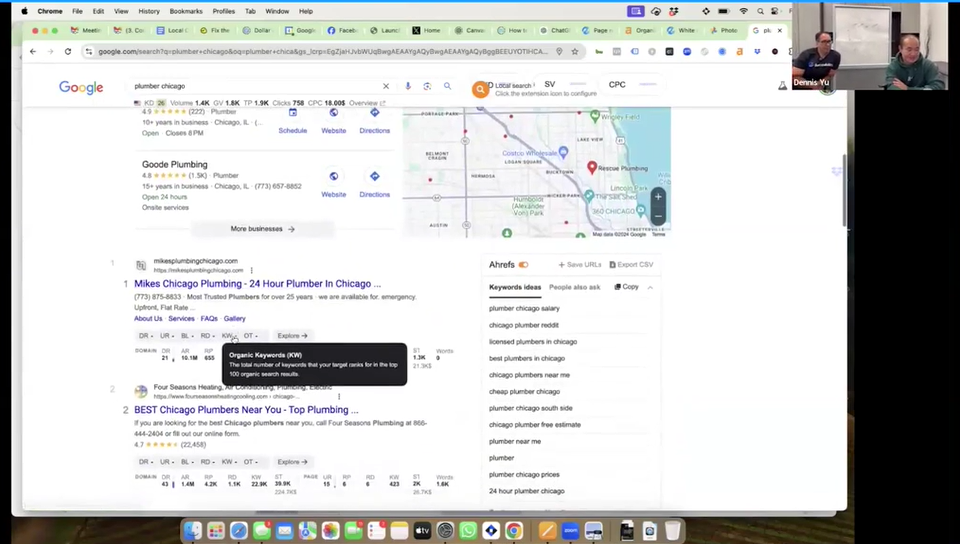
Mikes Chicago Plumbing has got “Chicago” in the name – he’s not even that competitive, and ranks for 578 keywords, including “Chicago plumber.” He appears in two search features — site links and the local pack — in addition to the regular search results.

Out of the 450 monthly searches for “Chicago plumber,” he gets 167 clicks—a third of the traffic—because he’s in position two. That’s a normal outcome for a business ranking well but not dominating the top spot.
“Chicago plumber” and “plumber Chicago” aren’t exactly the same search terms, but they do overlap. Other variations, like “commercial plumber,” or modifiers such as “near me” and “nearby,” also contribute to the local search landscape. These variations trigger local packs, PAA (People Also Ask) boxes, and videos.
This plumber’s strategy includes creating video content showcasing his team at work. These videos help him appear in additional SERP features.
- He’s running ads at both the top and bottom of the search results.
- He has paid site links through Google Ads.
- He shows up in the local pack.
- His videos also rank in the SERPs.
Auditing Backlinks for SEO Insights
Most people don’t realize how easily backlinks can be audited. (When you hire an SEO company, you can review their progress instead of simply accepting statements like, “Oh, SEO takes time,” or “Google changed its mind.”)
For instance, this plumber has a backlink from “Chicago Interview.” While it’s a low domain authority site, consider this: the “Number One Cleaning Service in Chicago” links to this plumber. They’re implementing the exact strategy we’re discussing:
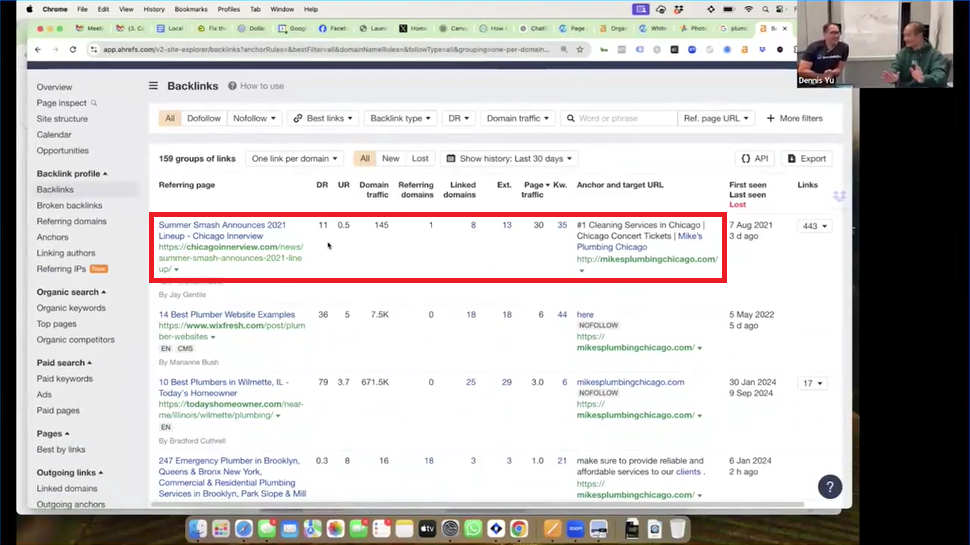
Sure, the domain rating (DR) is only 11, but DR is just one metric — a diagnostic tool. A high DR, like 60 or 70, isn’t the whole story. It’s important to focus on the overall relevance and quality of links.
Examples of Backlinks and Their Relevance
Looking at some of his other links:
- “14 Best Plumber Websites”
- “10 Best Plumbers in Wilmette” (a Chicago suburb)
- “24/7 Emergency Plumbing in Brooklyn, Queens, and New York”
At first glance, you might wonder how some of these are relevant. But they are, as they relate to plumbing—either geographically or by niche. Relevance doesn’t always have to be geographic; it can also be about the industry or subject matter.
Building Relationships Through Backlinks
This plumber, who ranks number two in local search, has links from other Chicago businesses and is linking back to them as well. It’s not a direct link exchange, which could violate Google’s policies. Instead, he’s demonstrating active relationships and collaboration within Chicago and the plumbing industry. This approach highlights his connections and reinforces his credibility, both locally and within his niche.
What Does This Mean for Your SEO?
If we know this works, what does it mean for your SEO? That’s the question. You need to start by opening up your phone, just like I showed you. I’ve got thousands of videos, and I’m not trying to be an influencer or go viral with flashy cars or a fancy lifestyle. I did that years ago. Now I drive a 2004 Toyota Camry. My goal is to show Judge Google that I do the things that I say I do.
If you’re a plumber, equip your crew to take pictures and videos as they work. Collect reviews along the way. Document simple, everyday activities that show your connection to the local community, like:
- Stopping by your favorite Starbucks
- Attending your son’s Little League game
- Going to a local concert
The key is to show local relevance. Interview people, highlight community involvement, and create a trail of authenticity that Google can see and trust.
Here’s what many people miss: anyone who ranks for what you want to rank for isn’t automatically your competitor. Unless they’re in your exact niche and location—like another Chicago plumber—you can collaborate with them. Even if they are, there’s still potential for collaboration if they specialize in something different, like residential plumbing while you focus on commercial.
If you follow this approach and establish these local signals, any work you do with a company like Boostability will be amplified. Boostability can enhance your signals, but they can’t create them from scratch. Think of it like giving the chef the right ingredients — you can’t expect a great dish without them.
As a practical example, a client of ours at TLS Insulation – is a home attic insulation company located in Sarasota. We also have another client called Southern Values Cooling and Heating, which is an HVAC company located down the road in Bradenton.
By recording content together, adding links to blog posts with context, and making it clear where their service areas are, they’re able to rank higher in the Sarasota area – even though they specialize in different services.
What Does This Have to Do with SEO?
The mechanics of ranking on search engines is having high-quality content that gets linked to other sites that have juice (and viewers).
SEO in general is a fancy way of saying “are you Googleable?”
The key to getting Googleable is by producing content that we can repurpose on different platforms. The goal is that users engage with it and find the content helpful.
Because the more users engage with it, the higher the relevance and ability for us to get these rankings. It’s all a trickle-down effect of having good content.
For example, in 2021 I was featured on Forbes. Forbes has a DR score of 94 with 175.5 million links.

A backlink from a site like Forbes holds tremendous power when it’s linked to you. Simply being mentioned on a site with that high of a DR score is massive for your website.
Think about this in terms of social media.
If someone with 2 million followers tags your account, what are the chances that you’ll gain followers if the info is useful?
Very high.
Don’t make the mistake of thinking you have to be linked by some DR 94 site to show visible improvement immediately. Just like growing on social media, it takes time and networking with others in a similar niche.
If you’re reading this, chances are you already have most of the tools you need.
Most local service businesses already operate off relationships. They’re called referrals.
But why stop there?
We want Google itself to be our referral network.

The geo-grid is a concept used in local service business advertising, particularly in the context of social media and digital marketing.
It’s a strategy that combines geographical targeting (Geo) with category-specific targeting (Category) to create a grid that helps businesses reach their target audience more effectively.
Here’s How It Works
- Geographical Targeting (Geo): The business divides its service area into smaller geographic zones, similar to the Geogrid concept. This can be done using zip codes, neighborhoods, or other relevant geographic divisions.
- Category-Specific Targeting (Category): Within each geographic zone, the business identifies different categories of services it offers or different customer segments it wants to target. For example, a local service business like an HVAC company might have categories like “air conditioning repair,” “heating installation,” or “emergency services.”
- Creating the Grid: The business then creates a grid where each cell represents a combination of a geographic zone and a service category. This allows the business to tailor its advertising messages and offers to specific needs and interests of potential customers in each area.
- Targeted Advertising: Using this grid, the business can create highly targeted advertising campaigns. For example, if the business knows that a particular neighborhood has a high demand for air conditioning repair services, it can direct its advertising efforts for that service specifically to that area.
- Performance Tracking and Optimization: By monitoring the performance of advertising efforts in each cell of the grid (i.e., each geo-category combination), the business can identify which areas and services are generating the most leads and conversions. This allows for ongoing optimization of advertising spend and messaging.
Overall, the geo-grid helps local service businesses to be more strategic and efficient in their advertising efforts, leading to better targeting, higher engagement, and ultimately, more customers.
Let’s look at an example.
A business that does IV Therapy in Tampa like Oasis Mobile IV Therapy should partner with businesses also in Tampa or IV Therapy businesses outside of their local service area.
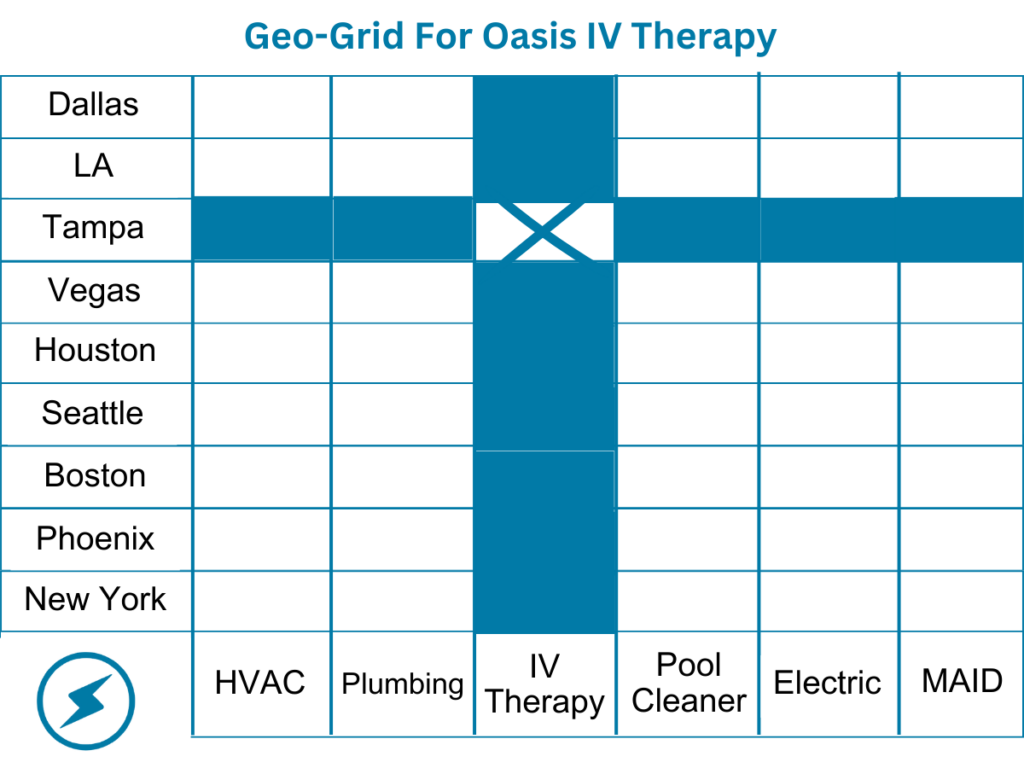
This leads to a “cross” in the sense that Oasis IV Therapy now knows the types of businesses they should collaborate with and link to and vice-versa.
Either IV Therapy clinics outside of Tampa or other local businesses in Tampa.
They’d have little in common with an HVAC business in New York or a Plumbing business in Boston. But they’d have much in common with an HVAC company in Tampa (Geo) or an IV Therapy Clinic in Phoenix.
By sharing link juice between these businesses, they can grow together ethically.
How Is This Different Than Buying Links?
The companies would be sharing relevant information in a way which isn’t spamming.
For example, if I own Oasis IV Therapy and there’s another IV Therapy clinic in Boston, I could link to a blog post the Boston business published on the safest way to conduct IV Therapy.
The Boston IV Therapy clinic could do the same, improving the trust of both companies at the same time.
Using a geo-grid for local SEO does not violate Google’s policies because it is essentially a tool for analyzing and visualizing data. It does not involve any manipulative practices that would go against Google’s guidelines.
The geo-grid itself is simply a way to map and understand how a business appears in local search results across different geographic areas.
It helps businesses identify areas for improvement and make data-driven decisions to enhance their local SEO efforts.
On the other hand, a link farm is a group of websites that all hyperlink to every other site in the group, with the primary purpose of increasing the number of inbound links to each site.
Link farms are considered a black hat SEO tactic and are explicitly against Google’s Webmaster Guidelines. They attempt to manipulate search engine rankings by artificially inflating the link popularity of the websites involved instead of E-E-A-T guidelines.
The key difference between using a geo-grid and participating in a link farm is that the former is a legitimate analytical tool for improving local SEO, while the latter is a deceptive practice aimed at gaming the search engine ranking system.
Geo-grids do not involve any manipulation of search results or link schemes; they simply provide insights based on existing search data.
There’s a Common Practice in SEO Called Location Service Pages – pages based on the communities you serve.
The ideal being that Google will crawl your site, find location specific keywords, and amplify your presence based off of them.
However, there’s a catch.
It’s not the geo-tagging that shows Google someone is local to their community – it’s local content and local relationships corroborated across many channels
Geo-Tagging Only Works with Proof of Real Relationships
My friends at Isaacs and Isaacs, a law firm in Kentucky, used to practice an insane amount of geo-tagging by having local service pages in every town they serviced.

It’s not that having LSPs doesn’t help.
It’s that each page is the same, just with different text.

So whether it’s Crawfordsville, Louisville, or anywhere else – the only thing that’s different is the text.
Why would Google not want to promote this?
You guessed it.
There’s No Evidence of Real Relationships
In other words – Google can’t confirm that you do what you say you do in the area you say you’re in.
How do you fix that?
You document these relationships and make each page unique for those you’ve serviced.
An actionable step in their case would be to reach out to past clients they’ve served and ask for a video from them mentioning their location.
In the local service world, that would mean documenting service workers based off location and posting images.
Did You Know That Every Photo You Take on Your Phone Is Location Tagged?
Let’s say you’re a plumber in Tampa, FL.
Have local service pages of the surrounding communities like Brandon, St Pete, Temple Terrace, etc.
In each of these LSPs, take photos of work you or your team has done.
Post to the accurate pages.
Let your work speak for itself.
Google Has One Goal: To Promote Reputable Companies to Solve Issues
The good news is that if you’re good at what you do, the marketing part is surprisingly easy.
You just have to give Google what they want.
Which is proof of relationships and good work done in the place you claim it was done in.
That’s it.
